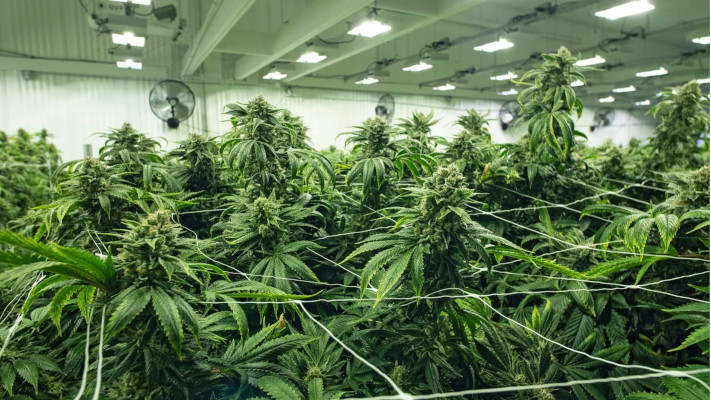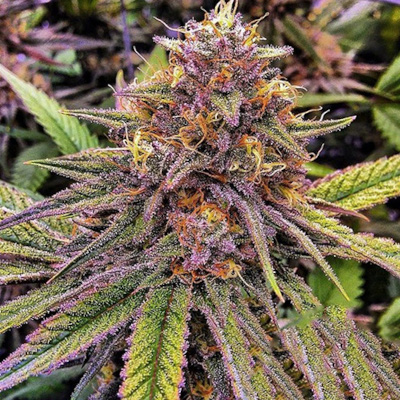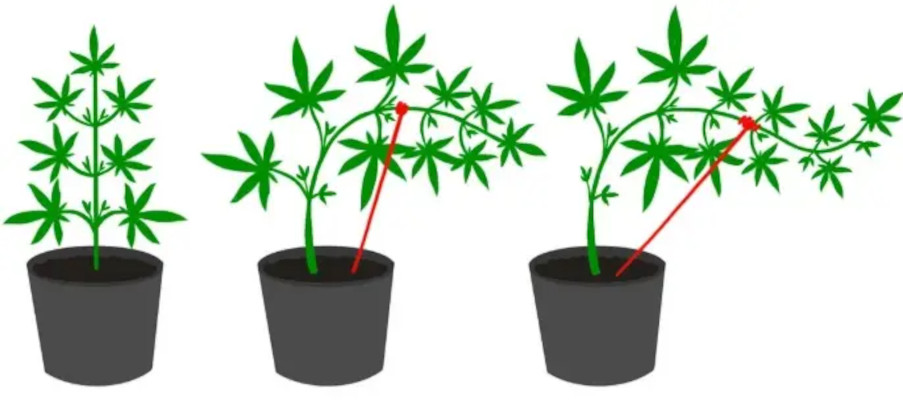BackSCROG Method: Maximize Your Cannabis Yield
20.10.2023

Want to take your cannabis cultivation to the next level and get the highest yield? Enter the exciting world of Screen of Green and learn how to efficiently create your green paradise using the scrogging technique. Let's get the most out of your grow together!
What is scrogging and how does Screen of Green work?
You've probably heard of scrogging during your career as a cannabis enthusiast, right? If you're into cannabis cultivation, you'll come across the word "scrog" a lot. It stands for "Screen of Green", a particular technique of cultivation that involves using a so-called scrog net to extract a higher yield from your plants indoors.
A similar method is the Sea of Green technique. The goal is the same: to get a higher yield per square meter during your grow.
Who comes out on top in "sog vs. scrog" always depends on the grower's situation.
One thing is for sure: Both methods are not for beginners!
Here you will first learn the most important details about scrogging and how it can help you take your yield to the next level.
Scrogging, also known as Screen of Green, is often used synonymously and describes a method where a net or grid (called "SCROG net") is stretched between your cannabis plants and their light source. With this net you make sure that all shoots grow the same length. Furthermore, through the net, all your cuties will get an equal amount of light. Instead of a single main shoot, as in standard grow, scroggening creates a multitude of colas. Cola is a botanical term that defines the flowering site of a female cannabis plant.
This method is especially effective if you have a small number of plants, as you increase the chance of a high-yielding grow.
One of the key techniques in scrogging for cannabis is "topping". This is a kind of training for the plant, where you prune the main shoot of your cuties to encourage the formation of several side shoots. You can then topping the two new main shoots again to get four main shoots and so on.
This technique is so useful in combination with the ScrOG method because it helps to evenly distribute plant growth across the ScrOG network. Topping encourages the plant to produce more side shoots, which can then be passed through the ScrOG net, resulting in a more even distribution of light and thus more yield.
Be sure to do topping late in the growing season. This means less stress for your plants. Also, by then most of the shoots should have already grown through the net, so you won't have any problems with interlacing.
Another well-known method is the so-called "lollipopping". Here you remove all shoots and leaves below the net during the first weeks of flowering. This way, your sweethearts will fully concentrate on forming flowers and making the best use of the available light.
Although the scrog technique is mainly used for indoor growing, you can also use the method outdoors. However, with outdoor scrog, you'll have to take into account some additional factors, such as weather conditions and animal damage. Still, it can be an effective way to maximize the growth of your plants and increase your yield.
Of course, you're eager to know the approximate yield per plant indoors. It's hard to make that general statement. The final yield depends on a variety of factors, such as the quality of the seeds, the type of care and the environment.

Advantages and disadvantages of the scrogging method
To give you a better overview, we have listed the advantages and disadvantages of the method.
Advantages of the scrogging method
- Optimal light distribution: The even height of the shoots in the SCROG method ensures that the light is optimally distributed. Thus, all your sweethearts have a chance to receive an even amount of light.
- Increased yield: Scrogging can increase the yield per plant. The even light distribution and the training of the plants by topping and lollipopping contribute significantly to this.
- Efficient use of space: SCROG netting allows you to use space efficiently by growing plants horizontally. This is especially useful in smaller growing spaces such as closets or storage rooms, with little floor space.
- Better control: Scroggen gives you better control over the development of your plants. You can actively intervene to control and optimize growth.
Disadvantages of the scrogging method
- Time investment: The SCROG method requires a lot of attention, patience and time investment. Weaving the shoots into the net and plant care during the growth process are activities that eat up a lot of time.
- Difficult to handle: Scrogging requires some skill and care. The process of weaving the shoots into the net can be difficult and tedious. Therefore, if you're a beginner, avoid the scrog method.
- Stress on the plants: The various techniques of scrogging, such as topping and lollipopping, can cause stress to the plants. So if you're not careful here, you can potentially hurt your loved ones.
- Only suitable for certain strains: Not all cannabis strains are suitable for scrogging. Photoperiod strains give much better results than autoflowering strains. Strains with strong stretch, i.e. strains that grow taller and more sparse, are better for scrogging.
Now you know the pros and cons of this method. But that's not quite enough for a successful scrog grow. So what about cannabis seeds for scrog growing? Which ones are eligible, and which ones are not?
Choosing the right seeds for scrogging
Choosing the right seeds is a critical factor in the success of your scrog grow. Generally, seeds from cannabis strains that have a pronounced side shoot formation and respond well to training are suitable.
Indica-dominant strains are often ideal for scrogging, as they usually grow bushy and produce a high number of side branches. Sativa-dominant strains can also be used, but often require more intensive training and management.
Note that autoflowering cannabis seeds tend to be less suitable for scrog cultivation due to their fast growth and short lifespan. Control is difficult and the plants do not like the net. Therefore, as a beginner, it makes more sense for you to start with photoperiod varieties.
Ultimately, the choice of scrog growing seeds depends on your individual preferences and goals. However, with the right scrog growing seeds and with careful care, you can reap the full benefits of scrogging.
Which cannabis strains are best?
Cultivating multiple seeds when growing scrog in the same scrog system allows for a variety of flowers. Choose strains with similar heights to minimize the effort.
We can recommend Green Gelato. It is known for its easy maintenance, dense flowering, and unique terpene profile. Her minimal leaf formation and dense flower clusters are perfect for the scrog method.
Otherwise, OG Kush would be a good choice. Her nodes have enough spacing, which makes her ideal for scrogging. Multiple toppings allow each location to reach its full potential and truly create an entire carpet of Kush. This strain produces uniformly large and dense buds, requires little maintenance, and delivers a high yield - perfect for scrogging!

Green Gelato by Roayl Queen Seeds
Here is a useful Scrog guide
A scrog net is the linchpin of scrogging. It provides even exposure for plants, improves air circulation, and provides structure for branches.
How to use the scrog net properly
Be sure to stretch the grow net properly. Arrange the branches so that they can easily intertwine with neighboring plants.
Hang your light source at a height that is sufficient for the light to be evenly distributed over the net.
The distance between the net and the plant should be 20 cm starting from the base of your plants. Start scrogging as soon as your cuties come into contact with the net.
Weaving the shoots into the net is a method of low stress training (LST). You carefully weave the shoots into the net, ensuring horizontal growth.
Important: Remember to do the process gently so as not to injure the plant and avoid unnecessary stress!
On the subject of watering: it is advisable to install a drip irrigation system or use a watering wand, this makes watering much easier and is not as time-consuming as using a watering can.
Remember, however, that drip irrigation is unsuitable if you fertilize organically!
Watch the natural growth of the branches to force your loved ones in one direction as little as possible. Each square of netting should ideally accommodate a single branch. After scrogging, plants might appear stressed, but recover quickly with adequate light and water. Readjusting the net after 2-3 days will help ensure optimal results.
Note: It is critical that you switch to a 12/12 light cycle to send the plants into bloom. However, don't do this until your net or grid is almost completely filled!
Here's a list of paraphernalia to help you get the most out of your scrogg:
- Scrog net
- Scissors (preferably special harvesting scissors)
- Disposable gloves
- Plant binder
- Pots
If you need the right utensils for your next grow, feel free to stop by our grow store.

Low strees training (LTS) method